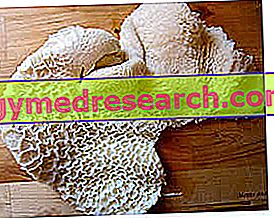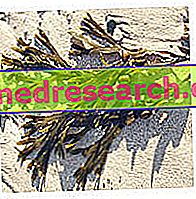Without genetic variability, all living things should (by heredity) be equal to the first. To have unequal beings, the only explanations would be those related to single creations. But we know that the structure of DNA, which is the basis for the transmission of hereditary characters, has a relative and not absolute stability. While stability guarantees the conservation of initial information, instability determines the changes, or rather (to use the specific term) mutations.
Mutations can be divided into 3 large groups:
- gene mutations;
- chromosomal mutations;
- genomic mutations.
At this point it is good to add briefly two concepts: one is that of "repair" and the other is that of "favorable" or "unfavorable" mutation.
The repair, an English-speaking term meaning repair, refers to the existence in cells of specific enzymatic processes designed to verify the conservation of information, eliminating or correcting the stretches of DNA that do not conform to the original.
The concept of «favorable» or «unfavorable» mutation expresses the comparison between the efficiency, for the organism and for the species, of the original gene («wild», that is «wild», primitive) and of the mutant gene.
It should be pointed out that the advantage and disadvantage always refer to certain environmental conditions; a disadvantageous mutation in a certain environment can become favorable under different conditions.
The consequences of this principle are very vast in population genetics, as the different efficiencies for survival of hemoglobin variants in normal or malarial environments can already demonstrate. But this argument should be referred to more detailed articles on general, human or medical genetics.
Another distinction is necessary (especially for gene mutations) between somatic mutations and germline mutations. All the cells of our multicellular organism derive, as is known, from a single zygote, but very early they differ in a somatic line, from which the whole body develops, and a germ line destined to form the gonads and, for terminal meiosis, the gametes. It is quite evident that, except for interactions between the two cellular populations, a mutation of the somatic line will manifest itself in the single organism but will not have reflexes on the descendants, while a mutation in the germ line will be able to manifest itself only in the descendants.
Regarding the different types of mutation and the relative consequences, it is good to still mention a classification of the causes of mutation. These causes are called mutagenic agents, which are mainly distinguished in physical and chemical mutagens. Several changes in the physical environment can lead to mutations, but the main physical mutagens are radiation. For this reason radioactive substances are dangerous, and above all the heavier radioactive particles which tend to cause mutations due to defection, with the most serious consequences.
Chemical mutagens can operate either by altering the ordered structure of nucleic acids, or by introducing into cells similar substances to normal nitrogenous bases, which can compete with these in the synthesis of nucleic acids, thus causing substitution mutations.
GENEAL MUTATIONS
Gene mutations involve one or a few genes, ie a limited portion of DNA. Since the information is stored in a sequence of nucleotide pairs, the smallest mutation unit (a muton) comprises a single pair of complementary bases. Without going into the details of the different mechanisms of mutation at the gene level, we can limit ourselves to mentioning two: that of basic substitution and that of re-election (or insertion). In mutations for basic replacement, one or more nucleotides of the DNA are replaced by others. If the error is not repaired in time, at the time of transcription it will follow a sequence altered also in the RNA. If the alteration of the triplet is not limited to a synonym (see the genetic code), the replacement of one or more amino acids in the polypeptide sequence will follow. The substitution of an amino acid can be more or less critical for the determination of the protein structure and for its function.
In mutations by re-election or insertion, one or more nucleotides are removed or added to the DNA sequence. These mutations are generally very serious because (unless they are whole triplets that add or remove individual amino acids) all the triplets that follow in the reading order are modified.
Gene mutations are the most frequent and are at the origin of most of the variability of hereditary traits among individuals.
CHROMOSOMAL MUTATIONS
These are mutations involving relatively long fragments of a chromosome. It is used to classify them mainly in:
- chromosomal mutations for re-election;
- chromosomal mutations by duplication;
- chromosomal mutations by translocation.
Defection mutations occur due to rupture and loss of a more or less long chromosome fragment. Especially in meiosis, this type of mutation is often lethal, due to the total loss of a number of genes, more or less indispensable.
In duplication mutations, following a rupture, the chromatid abutments tend to weld together.
In the subsequent removal of the centromeres, the chromosome, having become dicentric, breaks into often unequal parts: as can be seen, the result is re-election on the one hand and duplication on the other.
A chromosomal break can be followed by an inversion. The total genetic material is unchanged, but the sequence of genes on the chromosome is altered.
The case of a translocation is similar, but concerns the welding of a fragment of a chromosome on a chromosome not homologous. One chromosome is amputated and the other lengthened; the total genetic information of the cell is still unchanged, but the position effect is even more pronounced. It is easy to represent a position effect referring to the concept of regulation of gene action: by changing position on the chromosomes, a gene can easily leave an operon and be inserted into another, resulting in an altered activation or repression.
It is however said that a translocation is balanced (or balanced) when there is reciprocity of translocation between two pairs of chromosomes, keeping the sum of the genetic information unchanged. The balanced translocation generally corresponds to the cross-shaped figure in the meiotic diacinesis.
GENOMIC MUTATIONS
Remembered that the genome is the individual genetic patrimony, ordered in chromosomes, it can be specified that one speaks of genomic mutations when the chromosomes appear with a distribution different from the norm of the species.
Genomic mutations can be classified mainly in mutations for poliploídia, haploidy and aneuploidy.
Polyploidy mutations occur when reduplication does not result in division; they occur more easily in vegetables, where they are used to improve production.
If the lack of cell division occurs in meiosis, it will be possible to have diploid gametes; if such a gamete manages to fuse with a normal gamete, the zygote resulting from this fertilization will be triploid. Such a zygote can sometimes succeed in originating a whole organism, since reduplication and mitosis do not require an even number of chromosomes. At the time of meiosis, however, the regular coupling of homologous chromosomes will be impossible.
Genomic mutations for haploidy can occur when, in a normally diploid species, a gamete is activated by another gamete devoid of nuclear material, or even in the absence of fertilization: it will result in a haploid individual.
While the previous types of genomic mutations always concern the sum or subtraction of whole numbers of chromosomes, the aneuploid mutations concern the excess or defect of single chromosomes (chromosomal aberrations).
The euploid chromosome set of a species is defined as its normal or idiotype karyotype.
Edited by: Lorenzo Boscariol



